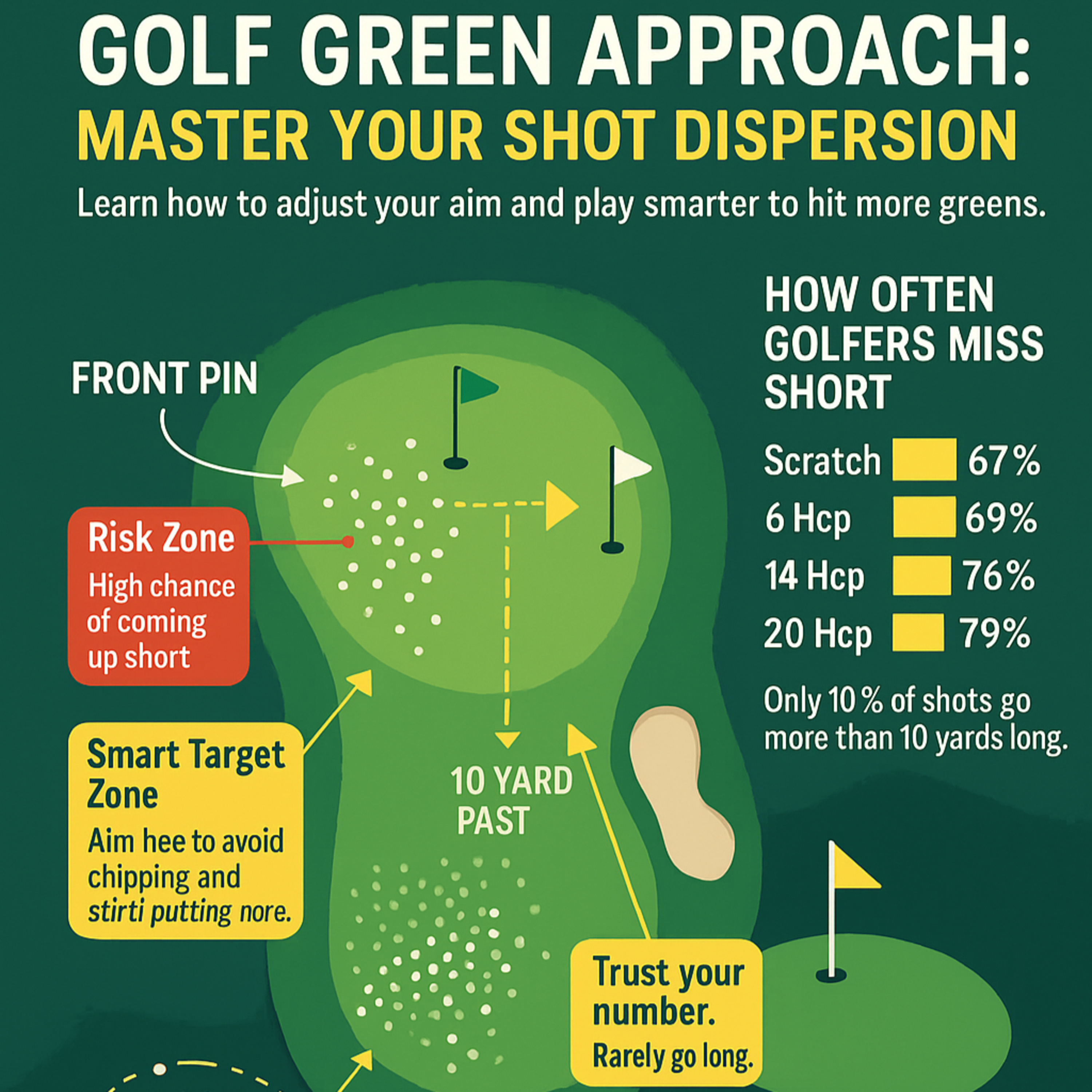#300 Golf Green Approach: Master Your Shot Dispersion
- Author
- Golf247.eu
- Published
- Wed 30 Jul 2025
- Episode Link
- https://podcasters.spotify.com/pod/show/puttin-pro/episodes/300-Golf-Green-Approach-Master-Your-Shot-Dispersion-e365r6g
By Henrik Jentsch, Director, Golf Academy 360° powered by eCoach 360° Office
Golfers often obsess over swing mechanics but overlook a silent score killer: poor strategy into the green. Most amateurs—and even low-handicappers—are unaware of how consistently they miss short. The real issue? A fundamental misunderstanding of carry distances and shot dispersion.
The Distance Myth
Most players believe they “know” how far they hit each club. In truth, they know their best-case scenario, not their average carry distance. The result is a chronic habit of leaving approach shots short. Data backs it up:
- Scratch golfers miss short 67% of the time.
- 6-handicappers: 69%
- 14-handicappers: 76%
- 20-handicappers: 79%
Across all levels, shots rarely go long—just 10% of the time, and usually not more than 10 yards. That common fear of "flying the green"? It’s mostly fiction.
The Strategy Shift
Once golfers accept that short is their most frequent miss, the strategic question changes from “How do I avoid going long?” to “How do I stay on the green more often?”
The answer lies in understanding your shot dispersion pattern—the area where most of your shots land. For the majority of players, that pattern sits short of the intended target. Planning for this tendency is the fastest way to hit more greens.
Jentsch’s Green Targeting Strategy
Henrik Jentsch, a leading voice in strategic performance coaching, suggests a simple fix:
- Always play one club more than you think
- Or, aim 5–10 yards past the flag—unless the pin is at the back of the green
Let’s break it down by pin location:
🟢 Front Pin
- Most dangerous to aim at directly.
- If your rangefinder says 150 yards, aim for 160.
This ensures your average shot lands on the green, not in the fringe or bunker.
⚪ Middle Pin
- Play for 155–160 yards instead of the exact number.
- You’ll center your dispersion more safely and reduce the chances of falling short.
🔴 Back Pin
- Here’s the exception: Aim at the exact yardage.
- Your shot pattern will likely end up just short of the flag, which is ideal.
- Missing long in this zone can lead to tricky downhill chips—so trust your number.
Results That Matter
This minor change in course management, not mechanics, can lower your score by 2–4 strokes per round. By planning smarter, you’ll:
- Hit more greens
- Create more birdie chances
- Avoid scrambling from poor lies
- Reduce pressure on your short game
A Game of Managed Misses
Jentsch emphasizes a powerful coaching truth:
“Golf is a game of misses. Your success depends on how well you manage them.”
Even a perfectly struck shot is only useful if it lands where it should. Without strategy, you’re relying on chance. And chance doesn’t break 80.
🎯 Takeaway: Next time you pull a club for your approach shot, don’t ask, “Can I get there?”
Ask instead: “Where will my average shot finish?”
Then adjust your aim—and your scorecard will thank you.
